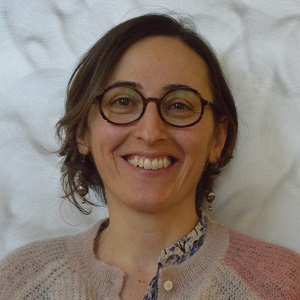The European Research Council - ERC was set up in 2007 to encourage the highest quality research in Europe through competitive funding and to support investigator-driven frontier research across all fields, on the basis of scientific excellence. Since 2007 SISSA has received 32 ERC grants, including 12 Starting Grants, 8 Advanced Grants, 7 Consolidator Grants, 1 Synergy Grant, and 4 Proof of Concept Grant. The School ranks among the top hosting institutions in Italy, in particular with respect to the small faculty size: 20% of its current faculty members have been awarded one or more ERC grants.
ACTIVE PROJECTS
| GWSky - Making Sense of the Unexpected in the Gravitational-Wave Skys | 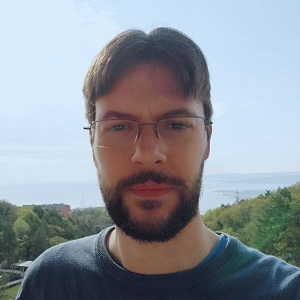 | |
| Synergy Grant 2025-2031 | PI: ENRICO BARAUSSE Research Field: Astroparticle Physics | |
| Existing and future gravitational-wave detectors will observe signals so precisely that they will be able to detect possible deviations from Einstein’s theory of relativity and the standard model of particle physics. To fully exploit this unique instrumental capability, fundamental advances are needed in the theoretical description of black holes, the gravitational waves they emit, their cosmic environment and physics beyond the standard model. The aim of the project is to use gravitational-wave measurements by existing and future observatories on Earth and in space as precision laboratories for fundamental physics, cosmology and astrophysics, providing the necessary theoretical framework. The ERC Synergy grant involves four nodes, SISSA (Trieste), the Niels Bohr Institute (Copenhagen), the University of California (Los Angeles), and the Max Planck Institute for Gravitational Physics (Potsdam). | ||
| beyond2 - from higher-order data statistics to neural representations |  | |
| Starting Grant 2024-2029 | PI: SEBASTIAN GOLDT Data Science | |
| Deep neural networks (DNNs) have revolutionised how we learn from data. Rather than requiring careful engineering and domain knowledge to extract features from raw data, DNNs learn the relevant features for a task automatically from data. In particular, high-order correlations (HOCs) of the data are crucial for both the performance of DNNs and the type of features they learn. beyond2 will develop a theory for how and what neural networks learn from the high-order correlations of their data. Studying the interplay between data structure and learning dynamics will allow understanding how specific learning mechanisms, like attention or recursion, are able to unwrap HOCs. By shifting the focus from unstructured to non-Gaussian data models, beyond2 will yield new insights into the inner workings of neural networks. These insights will bring theory closer to practice and might facilitate the safe deployment of neural networks in high-stakes applications. | ||
| GUnDHam- Generating unstable dynamics in dispersive Hamiltonian fluids |  | |
| Consolidator Grant 2023-2028 | PI: ALBERTO MASPERO Mathematics | |
| Energy cascades associated with turbulence and extreme phenomena, such as the formation of anomalous waves are commonly observed in oceans, planetary atmospheres, and replicated in experimental laboratories. However, their mathematical description is still in its early stages. The GUnDHam project aims to help fill this knowledge gap by providing a solid theoretical foundation for their mathematical understanding. The research project will rigorously demonstrate the emergence of instability phenomena in certain dispersive Hamiltonian equations that govern the dynamics of fluids on large spatial scales, including water waves and geophysical fluids. | ||
| FLEXIN- Context-dependent flexibility in innate behaviours and their underlying neural circuitry | 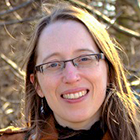 | |
| Starting Grant 2023-2028 | PI: KATJA REINHARD Neurobiology | |
| Avoiding danger is one of the most essential and conserved set of behaviors, observed in most species from crabs to primates. To optimize an animal’s survival, the type, magnitude, and kinetics of avoidance responses need to be flexible and adaptable to the current context. However, the neural circuit elements that allow for this flexibility in behavioural output are largely unknown. Our aim is to identify how information about the environment and state can adapt behavioural decision making. | ||
| CeleBH - The celestial road to a holographic description of black holes | 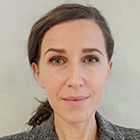 | |
| Starting Grant 2023-2028 | PI: LAURA DONNAY Theoretical Particle Physics | |
| Black holes are at the root of the most striking puzzles that arise when attempting to combine Einstein's theory of gravitation with quantum mechanics; they are therefore thought to be key to a formulation of a theory of quantum gravity. In recent years, the so-called holographic correspondence has provided theoretical physicists with a very powerful approach to quantum gravity, but it has not been developed so far for realistic kinds of spacetimes, such as the universe we live in. By exploiting the powerful constraints implied by newly discovered symmetries that arise at spacetime boundaries, CeleBH aims at unveiling a holographic description of gravity for realistic spacetimes (celestial holography) and quantum properties of black holes. | ||
| GeoSub - Geometric analysis of sub-Riemannian spaces through interpolation inequalities | 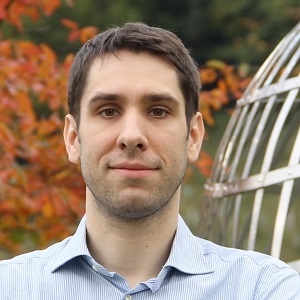 | |
| Starting Grant 2022-2026 | PI: LUCA RIZZI Research Field: Mathematical Analysis, Modelling, and Applications | |
| Sub-Riemannian spaces are geometrical structures that model constrained systems, and constitute a vast generalization of Riemannian geometry. In the last 10 years, a surge of interest in the study of geometric and functional inequalities on sub-Riemannian spaces revealed unexpected behaviors and intriguing phenomena that failed to fit into the classical schemes inspired by Riemannian geometry. GeoSub aims to develop a unified framework of geometric and functional interpolation inequalities adapted to sub-Riemannian manifolds and to use this theory to tackle old and new problems concerning the geometric analysis of these structures. (Ph: Archives of the Mathematisches Forschungsinstitut Oberwolfach) | ||
| NP-QFT - Non-perturbative dynamics of quantum fields: from new deconfined phases of matter to quantum black holes | 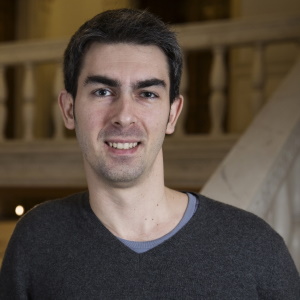 | |
| Consolidator Grant 2020-2025 | PI: FRANCESCO BENINI Research Field: Theoretical Particle Physics | |
| When the degrees of freedom that constitute a quantum physical system are strongly coupled among each other, their collective low-energy behaviour can exhibit exotic, surprising and unconventional phenomena. At the same time, though, our most sophisticated tool to describe the quantum world ̶ quantum field theory ̶ becomes extremely difficult to use. A variety of examples is provided by deconfined quantum states of matter. Another context is gravity: by the AdS/CFT correspondence, a fully-consistent quantum gravity in Anti-de-Sitter space can be described in terms of an ordinary ̶ but strongly coupled ̶ quantum field theory in one dimension less. This project will develop innovative techniques to tame strong coupling, will exploit them to discover new deconfined phases of matter, and will unravel mysteries of quantum gravity and the quantum physics of black holes. | ||
| MaMBoQ - Macroscopic Behavior of Many-Body Quantum Systems | 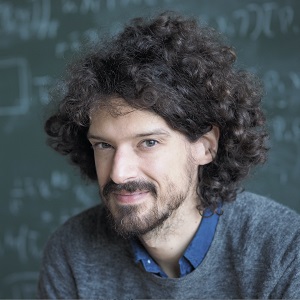 | |
| Starting Grant 2019-2024 | PI: MARCELLO PORTA Research Field: Mathematical Physics | |
| The project aims at developing mathematical methods for the rigorous description of the collective behavior of many-body quantum systems. The central theme is the notion of emergent effective theories: simplified models capturing the macroscopic features of complex systems. A main goal is to put on rigorous grounds the validity of effective theories of relevance in condensed matter physics, combining methods from functional analysis and statistical physics. The project focuses on applications to transport for graphene-like models, topological insulators and Weyl semimetals, and on the low-energy and non-equilibrium properties of large quantum systems in different scaling regimes. | ||
| GRAMS - GRavity from Astrophysical to Microscopic Scales |  | |
| Consolidator Grant 2019-2024 | PI: ENRICO BARAUSSE Research Field: Astroparticle Physics | |
| General Relativity describes gravity on a huge range of scales, field strengths and velocities. However, despite its successes, it has been showing its age. Cosmological data support the existence of a Dark Sector, but may also be interpreted as a breakdown of our understanding of gravity. Indeed, gravitational theories can be built to reproduce the large-scale behaviour of the Universe (i.e. the existence of Dark Energy and/or Dark Matter) without any actual Dark Sector, while at the same time passing local tests of gravity thanks to non-perturbative screening mechanisms. GRAMS will explore the possibility that this non-perturbative screening may fail in the strong-field, highly dynamical systems that emit gravitational waves for LIGO and Virgo. This will allow for using gravitational wave observation to confirm or rule out a modified gravity origin for the Dark Sector. | ||
| NEMO - New states of Entangled Matter Out of equilibrium | 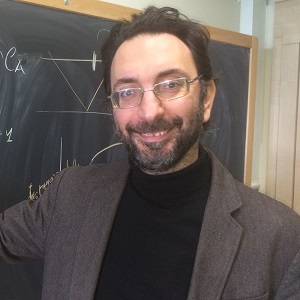 | |
| Consolidator Grant 2018-2024 | PI: PASQUALE CALABRESE Research Field: Statistical Physics | |
| When a quantum system is suddenly brought out of thermodynamic equilibrium all excitations collectively participate in the ensuing dynamics, causing a plethora of unconventional and exotic effects. The theoretical study of the non-equilibrium dynamics is hampered by the fact that the time dependent many-body wave function is highly entangled on spatial scales which rapidly grow in time. Consequently, a satisfactory description of this dynamics is a challenge whose solution cannot prescind from a characterisation of the entanglement. The ambitious goal of this project is to find and characterise new non-equilibrium states of matter guided by their entanglement content. | ||
| AGEnTh - Atomic Gauge and Entanglement Theories | 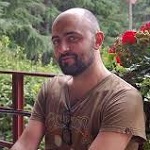 | |
| Starting Grant 2018-2023 | PI: MARCELLO DALMONTE Research Field: Statistical Physics,Theory and Numerical Simulation of Condensed Matter | |
| The overall aim of this project is to establish novel routes for the investigation of highly entangled quantum matter in atomic many-body systems, by addressing three complementary challenges along the way – probing, new phenomena, and implementations. The main goals are: i) devising scalable protocols for measuring entanglement in atomic quantum systems; ii) proposing gauge-theory-based mechanisms for the realization long-sought, highly-entangled states of matter, including topological phases supporting parafermion edge modes, and quantum spin liquids; iii) developing new tools for the implementation and understanding of atomic gauge theories. | ||
| FIRSTORM - Modeling First-Order Mott Transitions | 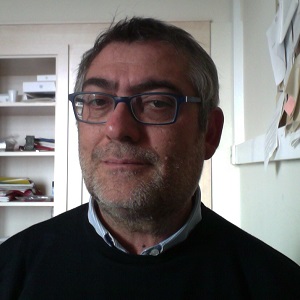 | |
| Advanced Grant 2016-2023 | PI: MICHELE FABRIZIO Research Field: Theory and Numerical Simulation of Condensed Matter | |
| Mott insulators are “unsuccessful metals”, where conduction is impeded by strong Coulomb repulsion. Over the very last years experiments on narrow-gap Mott insulators have disclosed an unprecedented scenario where light pulses or applied bias voltage stabilize metal phases that were only metastable at equilibrium, which foreshadows exciting potential applications. These new data call for a theoretical understanding so far missing, which is indeed the scope of FIRSTORM ERC project. | ||
| ARGOS - Advanced Reduced Groupware Online Simulation | 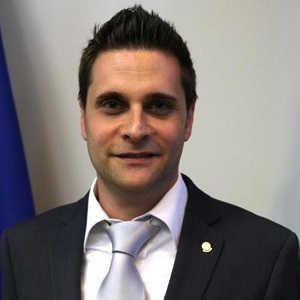 | |
| Proof of Concept 2022-2024 | PI: GIANLUIGI ROZZA Research Field: Mathematical Analysis, Modelling, and Applications | |
| ARGOS will develop a computational web-server for real-time computing based on parametric reduced order modeling techniques developed during the consolidator grant AROMA-CFD. An important focus will be, but not limited to, computational fluid dynamics. Offline-Online real-time computing will contribute to exploit computational sciences in fields and places where at the moment there is still little development. ARGOS will provide novel computational technologies to foster the important potential of scientific computing in industry, medicine, environmental sciences. The topic is strongly connected and integrated with Industry 4.0 as well as with digital twins developments. | ||
| Stripe-o-Morph - Morphing tubular structures for adaptive biomedical devices | 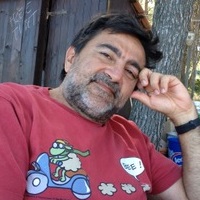 | |
| Proof of concept grant 2022-2024 linked to MicroMotility Advanced Grant | PI: ANTONIO DE SIMONE Research Field: Mathematical Analysis, Modelling, and Applications | |
| Morphing tubular structures are extensively used in interventional medical devices (e.g., stents). Current solutions lack adaptability to complex geometries and to patient-specific needs. Stripe-o-Morph proposes the use of devices with superior morphing capabilities, bio-inspired by motile micro-organisms, previously investigated in the ERC AdG “MicroMotility”, and based on the concept of morphing-by-sliding of parallel strips. | ||
COMPLETED PROJECTS
| STATLEARN - The Reading Brain as a Statistical Learning Machine | 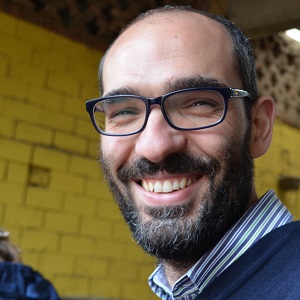 | |
| Starting Grant 2016-2022 | PI: DAVIDE CREPALDI Research Field: Cognitive Neuroscience | |
| Despite written language is not part of our genetic endowment, literate adults flawlessly process an impressive amount of information as they read. How does this come to be? STATLEARN tests the hypothesis that the magic behind our incredible reading proficiency is probabilistic learning - we would keep track of letter statistics to build a theory of how our words look like, and use this information to help word identification. The research is carried out through a mix of experimental psychology, cognitive neuroscience and computational modelling. Learn more on Youtube | ||
| AROMA-CFD - Advanced Reduced Order Methods with Applications in Computational Fluid Dynamics |  | |
| Consolidator Grant 2016-2022 | PI: GIANLUIGI ROZZA Research Field: Mathematical Analysis, Modelling, and Applications | |
| The aim of AROMA-CFD is the development of Advanced Reduced Order Modelling techniques with a focus on Computational Fluid Dynamics for more demanding applications in industrial, medical, and applied sciences contexts. AROMA-CFD deals with methodological developments in numerical analysis, with an emphasis on mathematical modeling and computational science and engineering. A reduced computational and geometrical framework will be developed for nonlinear inverse problems, focusing on optimal flow control, shape optimization, and uncertainty quantification, as well as multiphysics, such as fluid-structure interaction problems. Learn more on Youtube | ||
| LEARN2SEE - Invariant visual object representation in early postnatal and adult cortex | 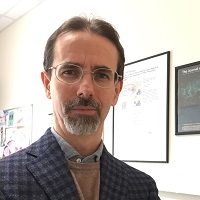 | |
| Consolidator Grant 2014-2020 | PI: DAVIDE ZOCCOLAN Research Field: Cognitive Neuroscience | |
| Our visual system can effortlessly recognize visual objects in spite of tremendous variation in their appearance – an extremely challenging task even for the most advanced artificial vision systems. Yet, little is known about how the brain develops and maintains invariant object representations. LEARN2SEE aims at shedding new lights on the computational principles underlying object vision, by applying an array of multidisciplinary approaches, including high-throughput behavioral testing, multi-channel neuronal recordings, controlled-rearing in virtual visual environments and computational modeling. Learn more on Youtube | ||
| SMARTLABCAM - Engineering and commercialization of a smart camera with on-chip image processing for head- and eye-tracking in laboratory animals | ||
| SMARTLABCAM takes the head- and eye-tracking systems for small mammals developed in the context of the LEARN2SEE project and tries to further develop them into commercial products for the market of laboratory equipment. | ||
| MicroMotility - Multi-scale modeling and simulation of biological and artificial locomotion at the micron scale |  | |
| Advanced Grant 2014-2020 | PI: ANTONIO DE SIMONE Research Field: Mathematical Analysis, Modelling, and Applications | |
The aim of this research is to gain insight into the mechanics of biological motility (in particular, swimming and crawling of microscopic organisms), to distill the key principles that underlie successful locomotion strategies in nature, and to exploit them for the conceptual design of bio-mimetic, self-propelled micro-devices. A combination of theoretical, numerical, and experimental tools is used to approach the problem of biological and bio-inspired motility from a multidisciplinary perspective. | ||
| MODPHYSFRICT - Modelling the Physics of (Nano)Friction | 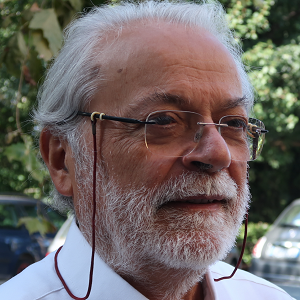 | |
| Advanced Grant 2013-2019 | PI: ERIO TOSATTI Research Field: Theory and Numerical Simulation of Condesed Matter | |
The goal of this project is to understand the physics of sliding friction at the nanometer scale, primarily through theoretical approaches covering phenomenology, model building, and molecular dynamics atomistic sliding simulations, both empirical and ab initio, electronic and magnetic dissipation. More fundamental questions are also in the works, including the forced tunneling of whole ions, or the building of mesoscopic theories of friction as a non-stationary phenomenon embedded in ordinary condensed matter theory and non-equilibrium statistical mechanics. | ||
| CGR2011TPS - Challenging General Relativity | 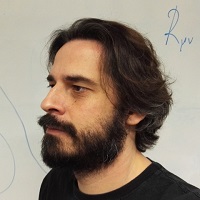 | |
| Starting Grant 2012-2018 | PI: THOMAS SOTIRIOU Research Field: Astroparticle Physics | |
| Gravity is the most enigmatic fundamental interaction. General Relativity, Einstein's celebrated theory has been very successful in explaining gravitational phenomena. However, it is also clear that it cannot describe gravity in all regimes. The program combined research in three directions, quantum gravity, alternative theories of gravity, and relativistic astrophysics, in order to probe the limits of General Relativity and find hints on how to go past them. | ||
| S-RNA-S - Small ribonucleic acids in silico | 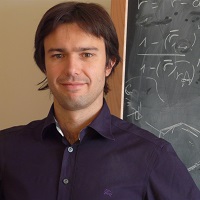 | |
| Starting Grant 2012-2017 | PI: GIOVANNI BUSSI Research Field: Physics and Chemistry of Biological Systems | |
| Ribonucleic acid (RNA) is a central molecule in cell biology. The comprehension of its properties at a molecular level is a key issue in the study of many diseases and paves the way to possible applications in molecular medicine. The aim of this project was to develop and apply computational methods based on molecular simulations for the study of RNA dynamics. Methods were then applied to the characterization of RNA folding and interaction with partners such as proteins, small molecules, and ions. | ||
| StabAGDG - Stability and wall-crossing in algebraic and differential geometry | 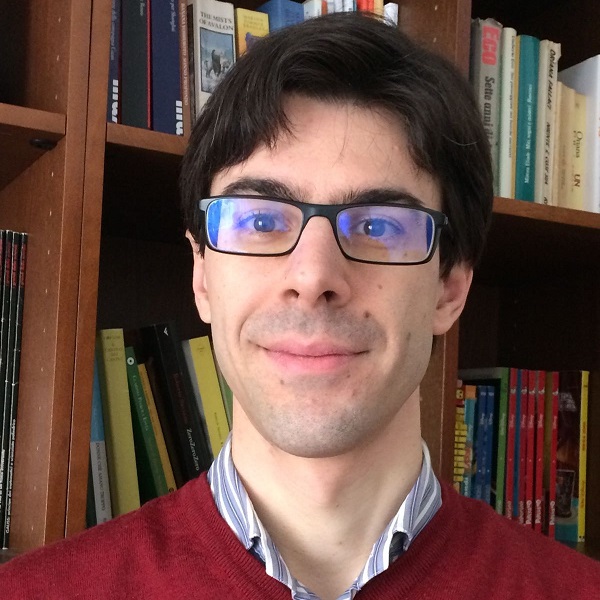 | |
| Starting Grant 2012-2017 | PI: JACOPO STOPPA Research Field: Geometry and Mathematical Physics | |
| The team members of the project “StabAGDG” worked on some fundamental questions in mathematics and mathematical physics. They studied Einstein’s equations of gravitation and the Yang-Mills equations of particle physics from a mathematical perspective involving complex differential, algebraic and enumerative geometry, unveiling new hidden structures in the process. | ||
| DaMESyFla - Electroweak Symmetry Breaking, Flavor and Dark Matter: One Solution for Three Mysteries |  | |
| Advanced Grant 2011-2017 | PI: GUIDO MARTINELLI Research Field: Theoretical Particle Physics | |
| The goal of the project was to identify a coherent explanation of the three mysteries in the title, as complete and as unique as possible, by combining the vast information coming from the Energy, Intensity and Astroparticle frontiers. A variety of competences, ranging from phenomenological fits and data interpretation to unified models and fundamental theories, were used to interpret the results coming from a wide range of experiments and to formulate a coherent framework to account for them. | ||
| CONCEPT - Construction of Perception from Touch Signals | 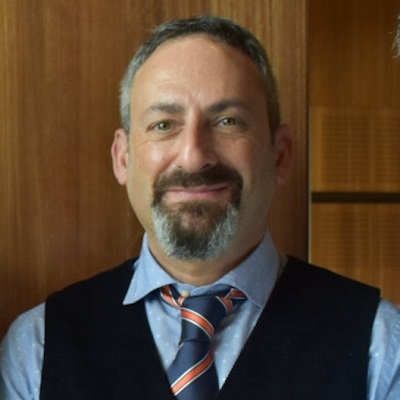 | |
| Advanced Grant 2012-2017 | PI: MATHEW E. DIAMOND Research Field: Cognitive Neuroscience | |
| CONCEPT examined how the brain transforms the neuronal representation of physical parameters into the neuronal representation of meaningful objects. An ideal platform for the inquiry is the rat whisker sensory system: it produces fast and accurate judgments of complex stimuli, yet can be broken down into accessible neuronal mechanisms. By combining behavioral tasks with measurements on neuronal activity throughout the cerebral cortex, CONCEPT has helped us understand the general principles for the cortical construction of perception. | ||
| NEUROMICRONICA - Modular behavioural neuroscience Proof of Concept Grant 2017-2018 - Associated with Advanced Grant CONCEPT | ||
| NEUROMICRONICA aimed to introduce to the neuroscience community the laboratory’s expertise in developing innovative instrumentation for the study of the awake rodent interacting with its environment, concomitant with the measurement and manipulation of brain activity, developed in the context of CONCEPT. The outcome of NEUROMICRONICA was the formation of a start-up company, CyNexo. | ||
| QuaDynEvoPro - Quasistatic and Dynamic Evolution Problems in Plasticity and Fracture | 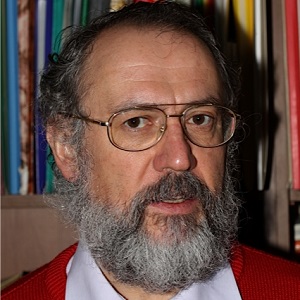 | |
| Advanced Grant 2012-2017 | PI: GIANNI DAL MASO Research Field: Mathematical Analysis, Modelling, and Applications | |
| The project was devoted to nonlinear evolution problems arising in the study of the inelastic behaviour of solids, in particular in plasticity and fracture. It focused on selected problems, grouped into three main topics, namely: i) Plasticity with hardening and softening, ii) Quasistatic crack growth, iii) Dynamic fracture mechanics. | ||
| EDEQS - Entangling and Disentangling Extended Quantum Systems |  | |
| Starting Grant 2011-2016 | PI: PASQUALE CALABRESE Research Field: Statistical Physics | |
| The main aim of this project was to utilize entanglement measures to fully classify states of matter in low-dimensional systems. In addition, entanglement measures were used to benchmark the performance of numerical algorithms based on tensor network states. A second main aim of this project was to use the entanglement to identify the most important features of the non-equilibrium time evolution after a “quantum quench,” with a view to solve exactly the quench dynamics in strongly interacting integrable models. A particular question we addressed is which observables “thermalize,” which is an issue of tremendous current experimental and theoretical interest. | ||
| PASCAL - Processing Activates Specific Constraints for Language Acquisition | 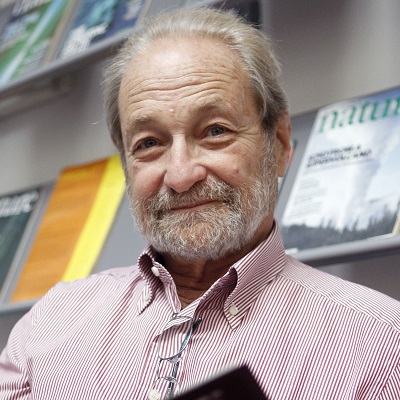 | |
| Advanced Grant 2011-2016 | PI: JACQUES MEHLER Research Field: Cognitive Neuroscience | |
| The PASCAL project investigated the human ability to acquire language and the underlying biological endowment that provides specific language learning mechanisms through studies of: i) the core cognitive dispositions which render neonates able to interact with speech signals; ii) the biological constraints that determine language acquisition dispositions; iii) the beginning of prosodic grouping abilities; iv) the origin of the functional specialization of segmental categories in speech processing; v) the type of bilingual exposure at different ages and their consequences for the enhancement of executive functions. | ||
| SUPERBAD - Understanding high-temperature superconductivity from the foundations | 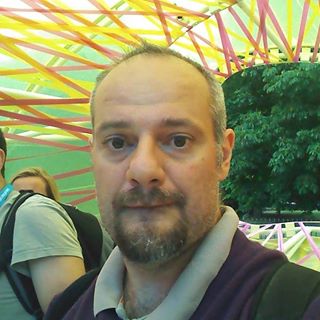 | |
| Starting Grant 2009-2015 | PI: MASSIMO CAPONE Research Field: Theory and Numerical Simulation of Condensed Matter | |
| The SUPERBAD project has contributed to developing a unified picture of high-temperature superconductivity in different classes of materials, including cuprates, iron-based materials, and fullerides. In all these materials, superconductivity appears as a "cure" for the bad metallic behavior arising as a consequence of strong electron-electron repulsion, which is responsible for the anomalies of the parent compounds and of the metallic state. We have successfully unified the phase diagram of these materials and explained a number of experimental results within a single theoretical scheme. | ||
| FroM-PDE - Frobenius Manifolds and Partial Differential Equations | 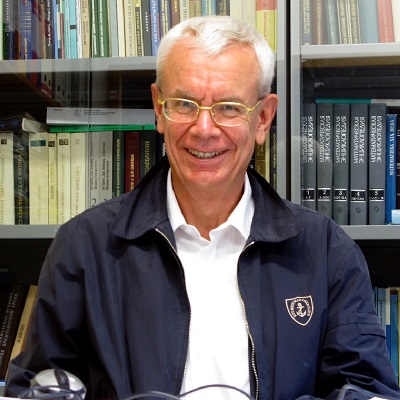 | |
| Advanced Grant 2009-2013 | PI: BORIS DUBROVIN Research Field: Geometry and Mathematical Physics | |
| The basic idea of the project was to apply the methods and results of the theory of integrable systems to non-integrable partial differential equations (PDEs). We do not promise to solve any PDE; however, in many cases, the solutions to a conservative non-integrable PDE in certain strongly nonlinear regimes exhibit integrable behavior. | ||
| ConLaws- Systems of hyperbolic conservation laws: singular limits, properties of solutions, and control problems | 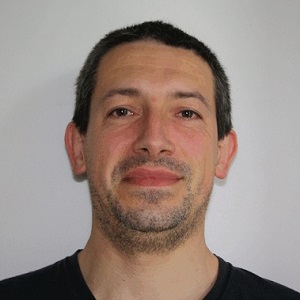 | |
| Starting Grant 2009-2013 | PI: STEFANO BIANCHINI Research Field: Mathematical Analysis, Modelling, and Applications | |
| The research program concerned various theoretic aspects of hyperbolic conservation laws: i) existence and uniqueness of solutions to systems of equations of mathematical physics with physical viscosity, and of relaxation and kinetic models; ii) conservation laws with large data; iii) fine properties of solutions to conservation laws; iv) control theory for hyperbolic equations. | ||


